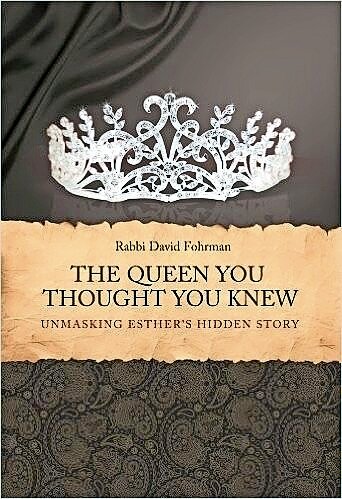As Purim nears, 2 books for Esther’s Megillah
Perhaps the two most popular literary works on the Jewish calendar are the Megillah and the Haggadah. Here are two unusual commentaries that pull together ancient pshat and drash in a modern lingo that should help further enrich an already crowed field of Megillah publications.
The first is titled “The Kol Menachem Megillah: The Book of Esther,” with commentary and insights based upon the works of the late Lubavitcher Rebbe complied and edited by Rabbi Chaim Miller. The format is similar to that of the our volumes in this distinguished and well received series, that being the famed Gutnick Chumash.
This well-annotated work presents to us an eloquent foreword containing valuable, historical and bibliographic data on both the Megillah texts and Targumin, including many famous commentaries, unique information concerning the role of the previous Rebbe in helping to enhance the serious nature of the themes of Purim and the role that the Rebbe’s Farbrengens played in generating a more spirited and informed holiday observance of Purim. The commentary itself references both the Rebbe’s works as well as those from the many classical rabbinic texts.
The one major feature that is the citation of the Nusach Ari’s custom concerning the limitation in the number of times that people are to bang at the mention of Haman’s name. This fact alone makes this particular work most unique.
According to Rabbi Miller, “The custom of banging only at certain places when Haman is mentioned is not uniquely Chabad. It is mentioned in the work ‘Itim LeBinah’ (Warsaw, 1886, page 119), that is practiced in Lithuania and other areas. It seems to be a partial concession to those authorities who maintain that no banging at all should take place, since it causes a disruption in the shul. Throughout the rabbinic literature there are many other different variants of this custom mentioned such as: banging only when Haman’s wickedness is mentioned (Sefer Haminhag); banging up until Haman’s sons hanging (Makor Chaim); and banging only when Haman’s downfall is mentioned (Emek Bracha).”
This edition of the Megillah highlights, in bright red letters, the name of Haman where the author deems it to be banged in accordance with his observed tradition, and there aren’t too many times that this occurs.
• • •
The next work is a narrative written by our Five Towns neighbor Rabbi David Fohrman of Woodmere — “The Queen You Thought You Knew: Unmasking Esther’s Hidden Story” (OU Press / HFBS Publishing, 2011).
Rabbi Fohrman, in a breezy and seemingly light hearted style writes a serious analysis of the actions, behaviors and motivations behind the Megillah narrative.
Rabbi Fohrman parses each major player’s personal quirks and attempts to go behind their seemingly superficial behavior in an attempt to ascertain the true spiritual, as well as human, motivations contained both within and without the printed text.
“When you really stop to think about it, Purim was deadly serious,” Rabbi Fohrman explains. “The Jews faced the very real prospect of genocide. Long before the world ever heard of concentration camps, we were almost wiped out on a single, terrifying day. The story is real — and it is harrowing. We owe it to ourselves to look at the story’s narrative as adults and ask what it really means to us.”
Rabbi Fohrman’s work deserves attention. It will most certainly help enhance one’s appreciation of the Megillah’s narrative, a new and refreshing take about Queen Esther and her actions, and offer a better understanding as to the true, serious and spiritual meaning of Purim.
Originally published in 2011.






